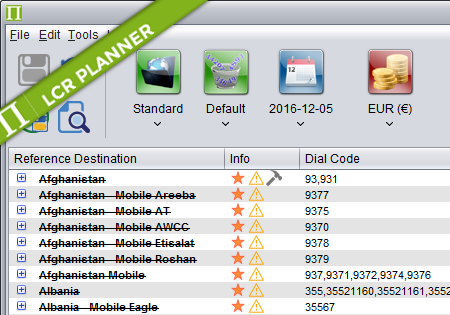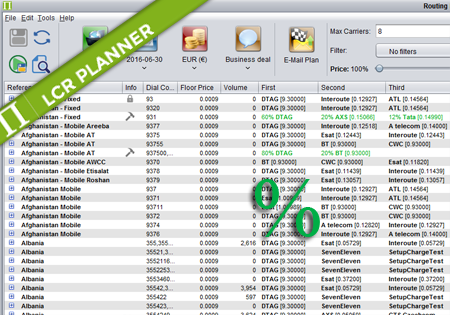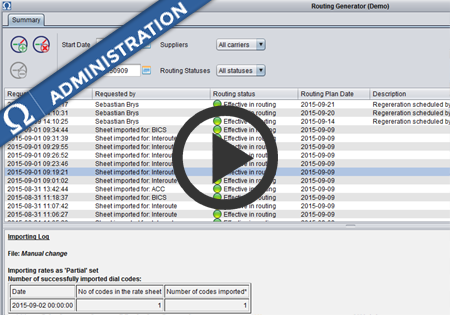How routing scenarios really work
Novatel Control Centre allows for configuring the following types of routing:
1) standard routing – prioritized order of carrier choices to try for routing by the switch
2) percentage routing – for balancing the traffic on a route across multiple carriers
3) percentage routing with backup carriers – the extension to the percentage routing with carriers to take traffic in case of the failure of the main percentage carriers
4) mixed routing – the combination of percentage and standard routing
When the phone call is received by the switch, the switch queries the NRS to find out the carriers which should be tried for routing this particular call.
NRS responds with the carriers in the order they should be tried by the switch. Even when percentage routing is configured in Control Centre, NRS converts that into an ordered list of carriers.
NRS always responds with a list of carriers. If you want only a single carrier on a route, you need to configure exclusive routing (set the maximum number of carrier choices on a route to 1).
Let’s assume we have the following carriers in our system: A, B, C, D, E.
1) Standard routing
With standard routing configured, the NRS will respond to the switch with the carriers ordered as they are displayed in Control Centre – taking into account all manual overrides.
2) Percentage routing
Let’s consider the following routing configured for a route: 50% A, 30% B, 20% C
The routing offered to the switch by the NRS will not look like this:
50% of responses to the switch: A
30% of responses to the switch: B
20% of responses to the switch: C
That would lead to losing the call when a carrier fails the call.
Instead, the NRS will offer the following combination of carrier lists:
50% of responses to the switch: A, B, C
30% of responses to the switch: B, C, A
20% of responses to the switch: C, A, B
With such combinations, if all carriers accept all call attempts we send them, the result will be exactly the percentage distribution we wanted. In case of a failure of any of these carriers, the switch will always try the other percentage carriers. This increases the chances of delivering the phone call.
3) Percentage routing with backup carriers
Let’s consider the following routing configured for a route: 50% A, 30% B, 20% C, D, E
Backup carriers work like overrides in standard routing. They are assigned a certain position in the list.
NRS will always put backup carriers at the end of the carrier choices list.
Backup carriers are supposed to be used for routing only when all percentage carriers fail.
In the routing scenario configured above, NRS will respond with the following combination of carriers:
50% of responses to the switch: A, B, C, D, E
30% of responses to the switch: B, C, A, D, E
20% of responses to the switch: C, A, B, D, E
4) Mixed routing
Mixed routing has been designed to allow for sending of a certain portion (as %) of the traffic via a single carrier while the remaining percentage (up to full 100%) is covered standard routing.
The standard routing after the percentage carrier may be just LCR or you can configure manual overrides just like you do in standard routing.
This means that by default, for mixed routing we only need to configure the single percentage carrier. The rest of the route will be dynamic and will depend on prices currently offered by the carriers (just like in standard routing)
Let’s assume that the prices of carriers B,C,D,E form the LCR (the cheapest carrier first): C, D, B, E
At the same time, we want to send 20% of the traffic via carrier A .
NRS will respond with the following combinations of carriers:
20% of responses to the switch A, C, D, B, E
80% (the remaining % up to 100%) of responses to the switch: C, D, B, E , A






